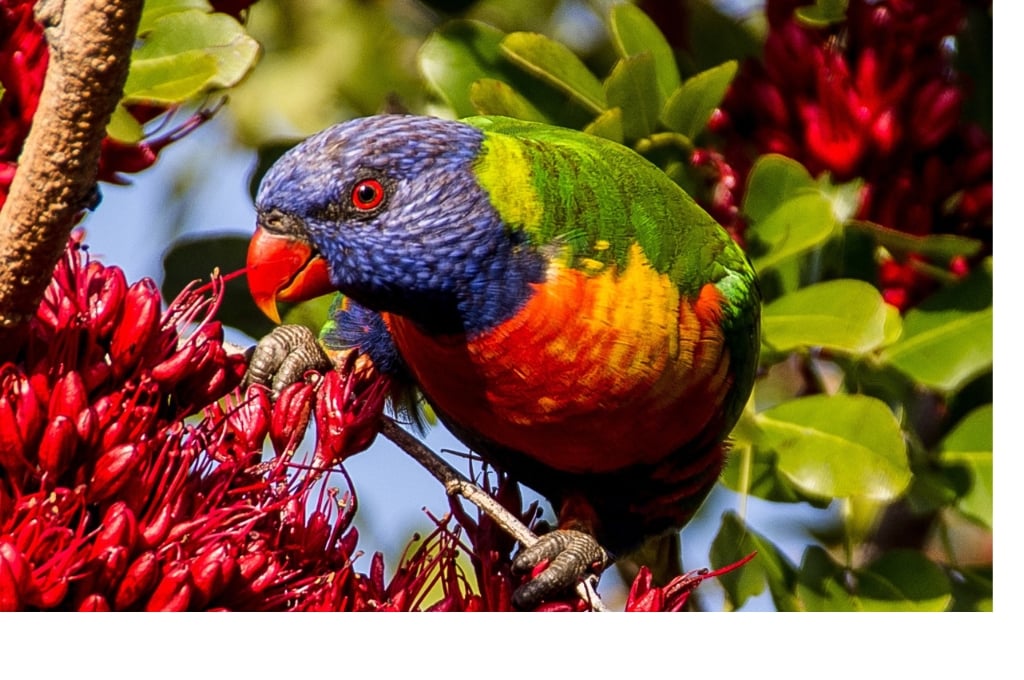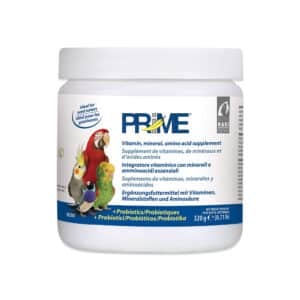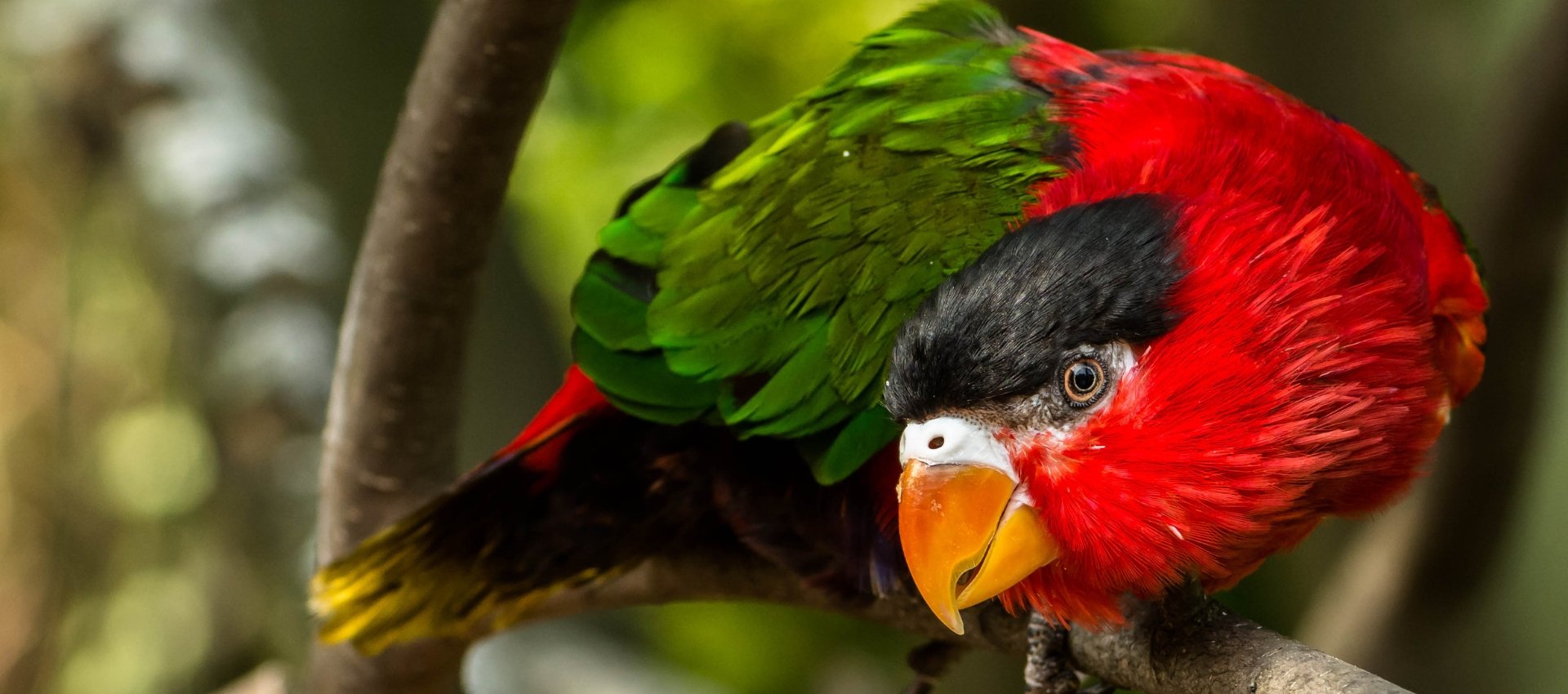Your cart is currently empty!
HARI Official Brand Site
Common Species
Rainbow Lory / Green-naped Lory (Trichoglossus haematodus), Dusky Lory (Psuedeos fuscata), Black Cap Lory (Lorius lory)), Duivenbode Lori (Chalcopsitta duivenbodei).
Origin/Habitat
Australia, Indonesia, and many Southeast Asian Islands
Playful, Sociable Birds with Unique Needs
Lorikeets are a fascinating species with their colorful appearance and lively personalities. They are capable of mimicking human speech and crave social interaction. As a result of their inquisitive and playful nature, they need plenty of space to play and explore. It is also important to let them out of their cage for a few hours every day to ensure they get enough exercise. It is important to remember that lorikeets can be very noisy. They have a distinctive screeching call that can be heard from a distance, which means that they may not be suitable pets for people who live in close proximity to others. While lorikeets can make wonderful pets for those willing to dedicate their time and effort to meeting their specific needs, they may not be suitable for everyone.
With over 53 species spanning 12 genera, Lories and lorikeets originate in Australia, Indonesia, and many Southeast Asian Islands such as New Guinea, Solomon Islands and Fiji. Only 12 varieties are reared as pets, the most common being the Rainbow or Green-naped Lory.
While lifespan can vary based on species, the average for most species is about 12-30 years.
Health Booklet
Keeping track of bird health by recording their growth, development, behavior and environment in a booklet can help ensure that your companion parrot will be healthy and happy for many years to come.
Physical Description
Lories and lorikeets are extremely colorful parrots with markings unique to their species. While the length of a lory is dependent on the species-the average length for most is about 12 inches. It is well-adapted for both hot and cold temperatures.
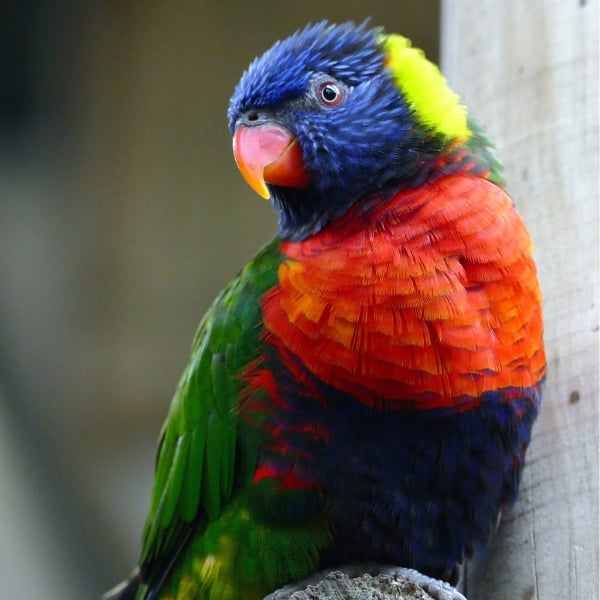
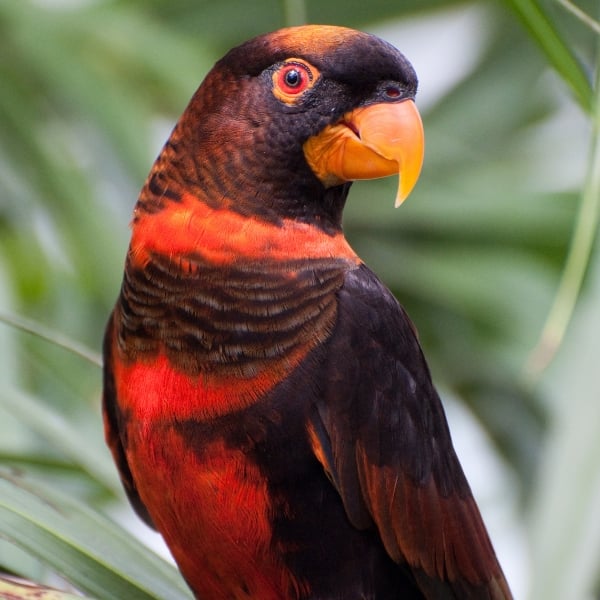
Compared to other parrot species, the most notable physical attribute of all lories is their brush-like tongue. The tufts of papillae on a lory’s tongue enable the bird to eat the pollen and nectar from flowers.
Sex
DNA sexing is the most accurate way to determine the sex of Lories and Lorikeets. Much like many of our other parrot species, a DNA blood test performed by a qualified experienced avian practitioner is also a good tool to determine the sex of the bird.
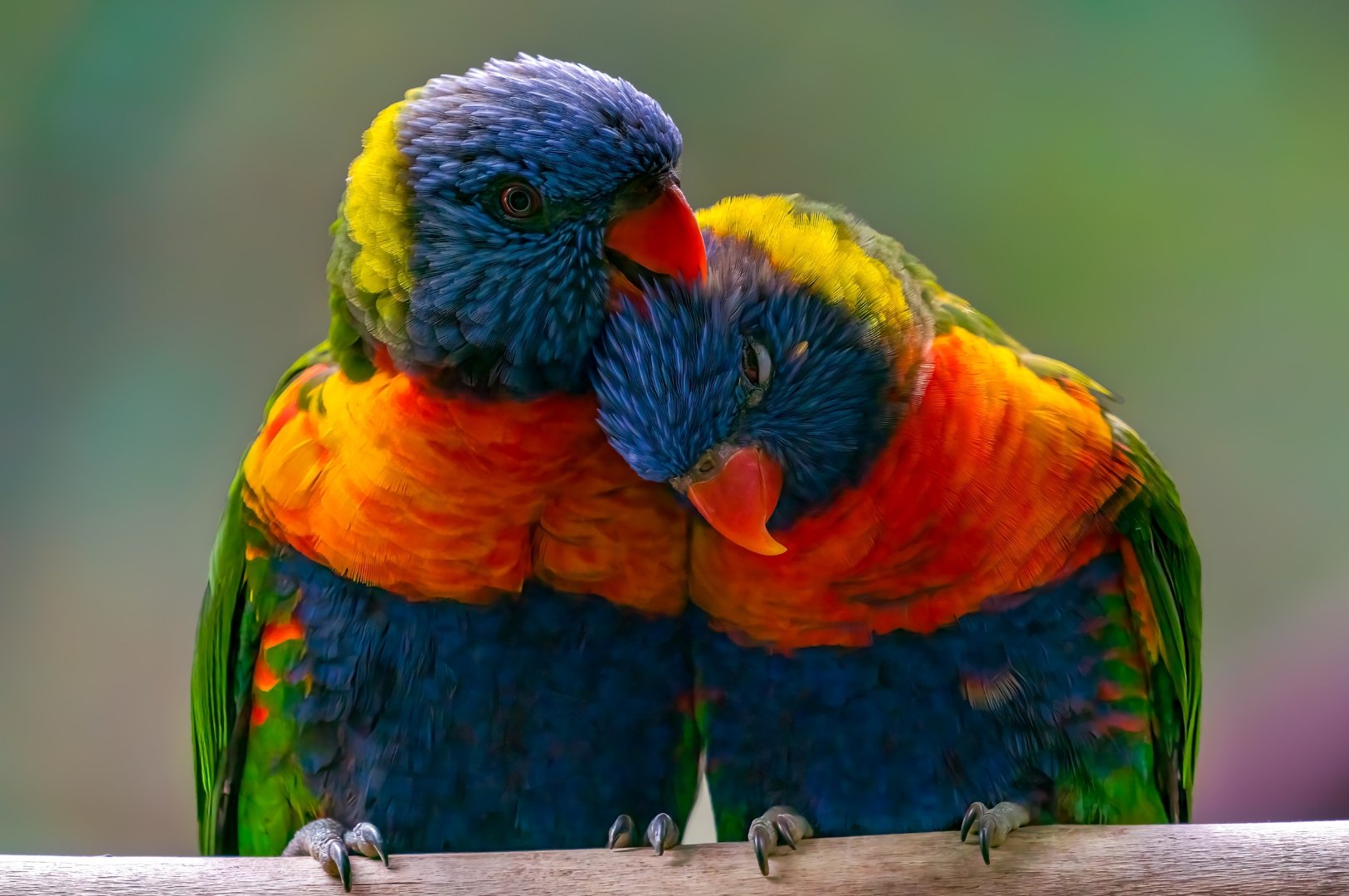
Personality Traits & Behaviors
Lories are very active birds and love to play and explore their environment. Well-planned foraging activities should be provided for pet lories to keep them psychologically and physically content!

Noise Level/Speech/Song
Some lories do learn to mimic human speech but do expect an occasional high-pitched whistle or a joyful chattering from time to time, especially when they are excited.

Intelligence & Learning
Lories are very intelligent and can be taught tricks with positive reinforcement. Because Lorikeets are so intelligent, they are also capable escape artists, so cage door locks are a necessity.

Threats/Conservation
Although many Lory and Lorikeet species are not currently endangered according to the IUCN Red List, some are facing challenges due to deforestation, predation, hunting, and illegal pet trade. Their colorful plumage makes them popular, but their tendency to feed on cultivated plants causes conflicts with farmers. Among others, the Red and Blue Lory (Eos histrio) species are classified as endangered.

Relationship with Humans
Lorikeets are intelligent and affectionate birds that make great pets. They can be taught tricks and enjoy playing, making them a fun addition to any household. Lorikeets also form strong bonds with their owners and enjoy being around people. With specialized care, they can thrive in a single-bird home and benefit from daily socialization with the rest of the family. They’re friendly, easy to socialize, and love interacting with their human keepers.
Care
The general rule of thumb when buying a bird cage is to buy the largest cage you can afford. For optimum health and safety, the cage should be at least two and a half times the width of the birds’ wingspan in all directions. Cage bar spacing should never be so wide that your bird could stick their head through, and their tail feathers should not be able to touch the bars when they are perched comfortably. Also consider your bird’s beak strength to determine the proper gauge of the bars as some birds have been known to bend the bars and escape.
A rectangular cage with horizontal bars in which your bird has plenty of room to climb and play is the best environment for your parrot. Your parrot will be happiest in a well-ventilated room with as much natural light as possible, yet away from direct sunlight and drafts. Your bird will want to be part of the action but not right in the middle of it. Avoid placing your bird’s cage in the kitchen as there are many hazards including vapors from heated PTFE coated pans (PTFE is better known as TeflonTM), hot stoves, pots of boiling water, and cooking fumes all of which can be very harmful to your bird. The cage and accessories should be thoroughly cleaned and disinfected weekly. Always provide your bird with clean water and food dishes daily.
Time out of the cage every day for socialization and exercise is important. Parrots enjoy supervised activities on a play gym loaded with their favorite toys and enrichment food. Make sure they do not have access to open doors or windows, toilets with the lid up, hot stoves, moving ceiling fans or large panes of glass. It’s also a good idea to ensure they do not chew on or ingest anything unsafe such as treated or painted wood or unsafe house plants. Do not keep your bird in a room where sprays such as perfume, hair spray, air fresheners or aerosol sprays are used frequently.
For the safety of your beloved parrot, we advise against leaving them unattended with other pets like dogs, cats, or ferrets.
Lories and Lorikeets, although they belong to the parrot family, have distinct dietary needs that can be more challenging than other parrot species. To ensure that these birds receive the proper nutrition, their diet should contain the right amount of amino acids, fats, vitamins, and minerals. One popular option for feeding companion Lorikeets or Lories is a nectar-based diet enriched with fruits and vegetables. However, keep in mind that nectar can spoil quickly if not consumed within a certain timeframe, and the droppings of the nectar-eating birds can be runny. Our recommendation is to provide high-quality extruded diets, such as Tropican Lifetime 2mm granules, as the base of the diet to meet their nutritional requirements and supplement with other healthy foods like nectar replacement and fresh fruits to add variety. It’s crucial to monitor dietary changes closely, and it’s always best to consult with an Avian vet. Further information on HARI’s Lory feeding trial research can be found here.
Lories and Lorikeets need 10 to 12 hours of uninterrupted sleep per night. If your bird cage is normally situated in a room where there is a lot of activity or movement, it is best to move it to a secluded dark area at night.
Many bird owners will cover the bird cage at night to help block out extra light (especially during the summertime). A cover can also keep the cage warmer (for those living in colder climates).
Placing a comfortable perch higher up in the cage will give them a sense of security and keep their feet healthy. If you do not plan on covering the cage or if the bird suffers from night terrors try using an infrared basking light or small night light in the room.
Lories need a variety of perch types and sizes. Improperly sized or dirty perches contribute to Pododermatitis or Bumblefoot. Many lory owners opt for washable plastic perches, especially near feed stations. Offer your bird at least three types of perches appropriately sized for their feet: cotton or sisal rope; natural wood perches with a variety of diameter. Keep perches clean and if you use cotton or sisal rope, check frequently for signs of loose strands. Often perches will need to be replaced due to normal wear and tear. If a grooming perch is utilized, please avoid placing this perch at the highest level of the cage nor place it near food and water stations.
Offer toys that will keep your lory occupied. We highly recommend having swings, climbing ropes and even a ladder to encourage movement and exercise. The toys should be rotated with new ones every week or two to prevent boredom. Our, Smart.Play bird toys were designed to stimulate various activities or functions, they are categorized into different groups: foraging, foot & audio, preening, exercise, and perching.
Foraging Toys helps promote mental and physical stimulation and relieve anxiety by providing entertainment. These types of toys are helpful when a bird is incorporated into a new environment and needs an outlet for their anxiety.
Foot & Audio Enrichment toys are a great addition to any bird toy collection and a great way to pique curiosity and entertain birds all while developing balance, dexterity, and strength.
Consistent positive behavior training is a great way to bond with your Lory parrot. It’s best to start training as early as possible and begin with basic commands, such as “step up” and “step down”. Use positive reinforcement techniques and praise to encourage good behavior. Training your bird on a stand with a favorite treat is an excellent way to utilize time away from their main cage.
Introducing your parrot to new situations is key in preventing fear and aggression towards strangers. Socialize your parrot by exposing them to different people, environments, toys, and foods. The more varied experiences your parrot has, the more comfortable and well-adjusted they will be.
In order to maintain the optimal health of lorikeets, it is recommended to regularly mist them. This helps to keep their skin and feathers in a healthy condition. Additionally, many lories enjoy the act of bathing, and will often take advantage of a traditional bird bath if provided.
Whether or not to trim your parrot’s flight feathers is your decision, but many owners choose to do so. Trimming is a painless process that is similar to a regular haircut and should be done twice a year during the bird’s moulting period. It’s also important to regularly inspect and groom your bird’s toenails. To ensure the safety of your bird, it’s recommended that a professional bird groomer handle the trimming of your bird’s nails and wings. This will prevent any accidental cutting of a blood feather, which can be dangerous for your bird. Keep in mind that trimming wings is not a guaranteed way to prevent flight, as even a few grown-in feathers can give your bird flight ability. Therefore, it’s important to never take your bird outside unless they are in a secure cage or wearing a properly fitted bird harness.
The following is a list of common household dangers: Non-stick surfaces (like TeflonTM coated pans), oven cleaner and self-cleaning ovens, cigarette smoke, paint and paint fumes, scented candles, household cleaners, floor polish, hairspray, chlorine bleach, perfume, aerosol sprays, nail polish and nail polish remover fumes and ingesting harmful or toxic house plants. It’s important to make sure everyone in the family is aware of food and other products in the home that are potentially toxic to lorikeets. Avocados, chocolate, coffee beans, onions, salt, and fruit seeds or pits should never be offered. Ceiling fans, cupboards, blinds and open doors & windows can also pose a risk as your pet may fly into, get trapped or simply fly away.
It’s important to keep an eye on your bird’s health and behavior since birds tend to hide signs of illness. For Lories and Lorikeets, it’s advisable to visit an avian vet or an exotic pet specialist for a thorough check-up and preventive health care plan at least once a year. When looking for a vet, choose one who specializes in bird and/or exotic pet species. Some clinics can handle routine bird appointments but may refer you to a certified avian vet for more complicated cases. An avian vet can offer expert guidance on proper health care for your bird.
Availability in the Pet Market
Most Lories and Lorikeets can be obtained from an avian specialty shop, pet dealer, or a reputable breeder. Online adoption organizations and rescues can also be a viable option for those looking to adopt a lory or lorikeet.
….
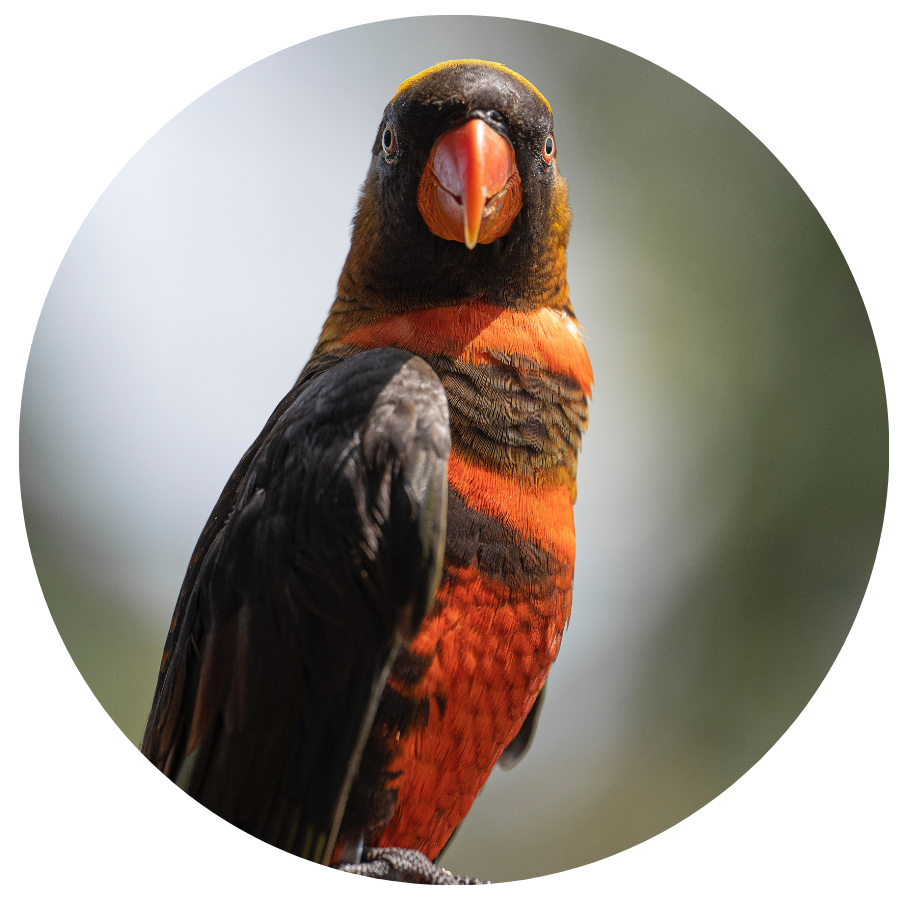
Aviculture
Breeding Habits
In the wild, sexual maturity will vary with species, but on average 2 to 4 years of age. While the breeding season can also vary depending on the species, the nesting season usually starts late August through December or when vegetation and food sources are readily available. Most species will lay 2-3 eggs per clutch.
In an aviary setting, the breeding season is dependent on species, pair compatibility and the environment. Many aviculturists offer two nest boxes for first-time breeding pairs. In most cases, an L-shaped nest box is preferred by the breeding pair.
Hatchling to Fledgling
Most aviculturists that cater to the pet bird trade prefer to have the parent birds raise the babies for about 2-3 weeks before removing them for hand feeding. Breeding parrots should be in optimal health and require proper nutrition to meet the needs of the “expectant” parents and the nestlings. Tropican Lifetime 2mm is an excellent choice as well as vegetables and fruits high in beta carotenes to meet the nutritional needs of breeding lories and lorikeets. Adding Prime Vitamins to the diet is also beneficial for breeding pairs on a predominate nectar-based diet.
Suggested Products
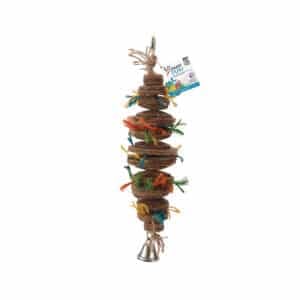
Smart.Play
Venus, Large, Enrichment Parrot Toy for Medium Birds
Enrichment Parrot Toy for Medium Birds

